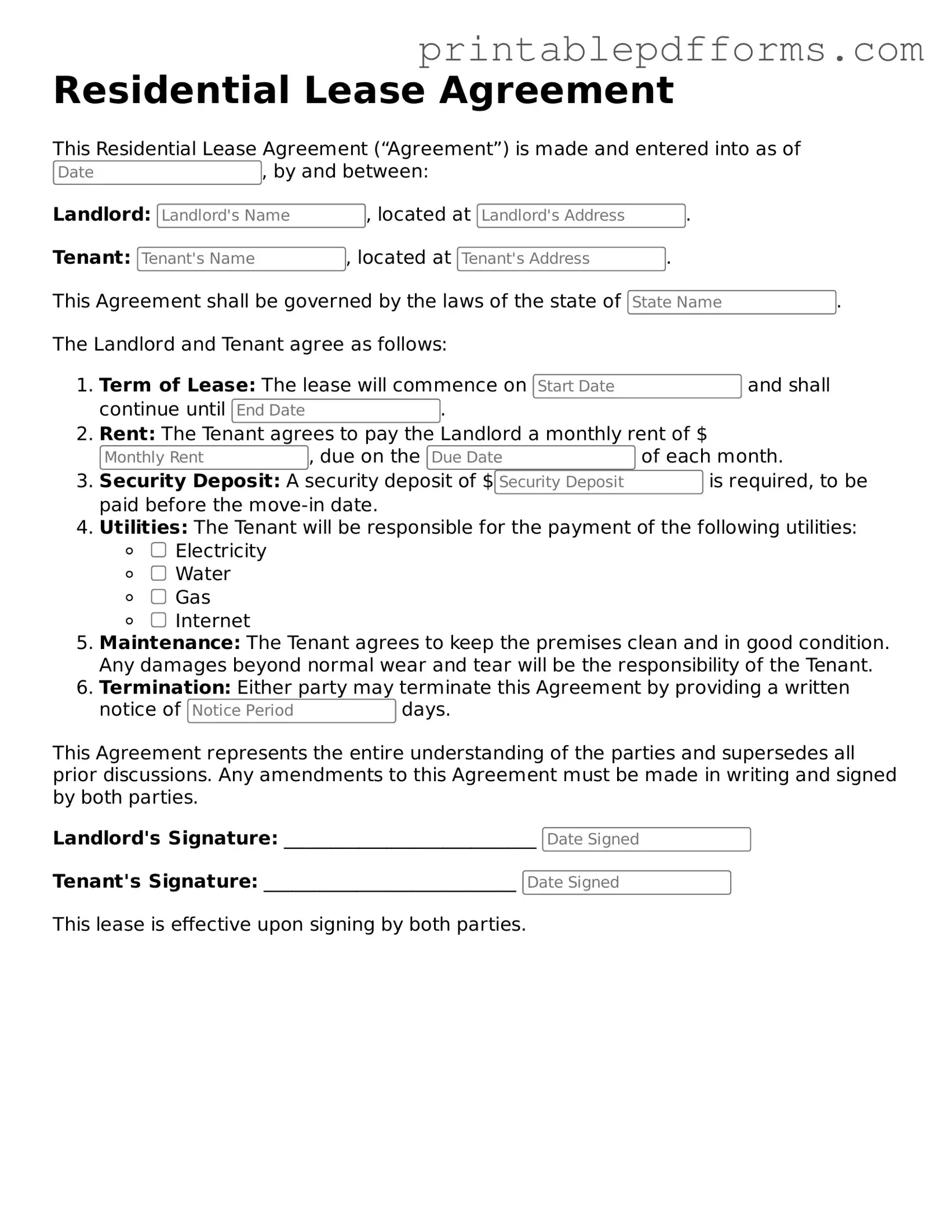What is a Lease Agreement?
A Lease Agreement is a legal document between a landlord and a tenant. It outlines the terms under which the tenant can occupy the property. This includes details like rent amount, duration of the lease, and responsibilities for maintenance.
Why do I need a Lease Agreement?
A Lease Agreement protects both the landlord and the tenant. It clearly defines expectations and responsibilities, which can help prevent disputes. Having a written agreement also provides legal recourse if either party fails to uphold their end of the deal.
What should be included in a Lease Agreement?
Typically, a Lease Agreement should include:
-
Names of the landlord and tenant
-
Property address
-
Lease term (start and end dates)
-
Rent amount and due date
-
Security deposit information
-
Maintenance responsibilities
-
Rules regarding pets and smoking
-
Termination conditions
How long is a typical Lease Agreement?
Lease Agreements can vary in length. Common terms are 6 months, 12 months, or even longer. Some landlords may offer month-to-month leases, which provide more flexibility but can be less stable for tenants.
What happens if I break the Lease Agreement?
If you break the Lease Agreement, you may face penalties. These can include losing your security deposit or being responsible for remaining rent payments until a new tenant is found. It's important to read the agreement carefully to understand the consequences.
Can a Lease Agreement be renewed?
Yes, many Lease Agreements include a renewal option. This allows tenants to extend their lease for another term under the same conditions. Always discuss renewal with your landlord before the current lease ends.
What is a security deposit?
A security deposit is a sum of money that the tenant pays to the landlord before moving in. It serves as protection for the landlord against potential damages or unpaid rent. The amount is usually equal to one month’s rent and is refundable at the end of the lease, minus any deductions for damages.
Are there any laws governing Lease Agreements?
Yes, each state has its own laws regarding Lease Agreements. These laws cover issues like security deposits, eviction processes, and tenant rights. It’s essential to be aware of your local laws to ensure your Lease Agreement complies.
What should I do if I have a dispute with my landlord?
If a dispute arises, first try to resolve the issue directly with your landlord. Open communication can often lead to a solution. If that fails, you may want to consider mediation or legal advice, especially if it involves serious issues like eviction or safety concerns.
Can I modify my Lease Agreement?
Modifications can be made, but both the landlord and tenant must agree to any changes. It's best to put any modifications in writing and have both parties sign the new agreement to avoid confusion later.
